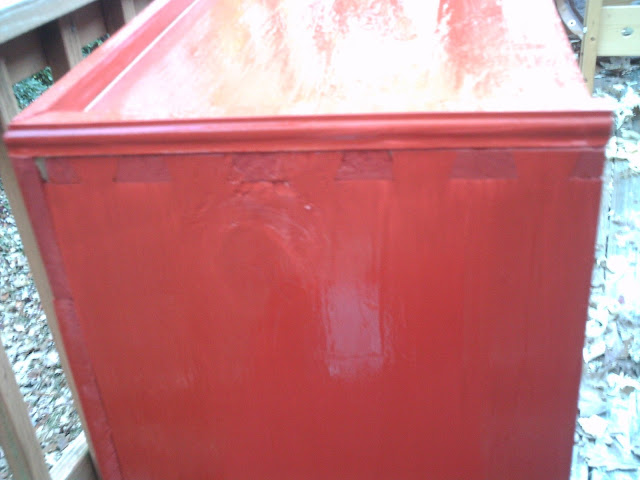I've been working on a small chest of drawers for my brother-in-law's fly fishing gear so that he could have the majority of it in one place. The case is made out of eastern white pine with the sides dovetailed together. The door is a panel and frame construction with the rails and stiles made out of red oak. The panel is eastern white pine with a raised and fielded panel. For the top, I added a small cyma recta molding along the outside edges away from the door. Unfortunately by the time I got everything assembled, painted, scraped, and looking good, my camera quit working so I wasn't able to get pictures of the door being fitted and how it looked over all. C'est la vie.
Practice joinery with my bow saw before I start cutting tenons.
Square cuts.
Open mortise and tenon practice joint with a 90 degree fit. Unfortunately on the other side there's a nice gap between the rail and the stile.
Ripping one out.
Square shoulder.
Tenons waiting to be pared to the line with a chisel.
Ready for glue up.
Molding detail.

Some final thoughts on this chest:
- Experience is the best teacher. I planned to inset the drawer runners into a shallow dado on the carcase sides. I accidentally flipped one side of the carcase upside down, and because the bottom and top drawers are different sizes, the dadoes on either side didn't match and I wound up gluing the runners to the sides of the case. So I pretty much made a rookie mistake and just wasted time cutting accurate dadoes.
- Case construction is paramount. Mid-way through the glue up I had serious misgivings about the runners. I figured there was no way the red oak runners would hold and they'd tear off from the case sides. But once the glue cured and I took off the clamps, I put as much body weight as I possibly could on the left runner and it still stayed as strong as ever due to the large glue surface area. Gluing or nailing the runners to the case sides on something this small is fine, but it's still not as well-designed as I'd like. The top and bottom boards have the pins on them; that way when the chest is picked up, the pins will wedge tight against the tails, even if the glue fails, and the bottom won't fall out along with the drawers. The only downside to this is that the drawers over time could push the sides out. A dovetailed drawer divider would help with that and make it more aesthetically pleasing, and a web frame is the more traditional way of supporting drawers.











No comments:
Post a Comment